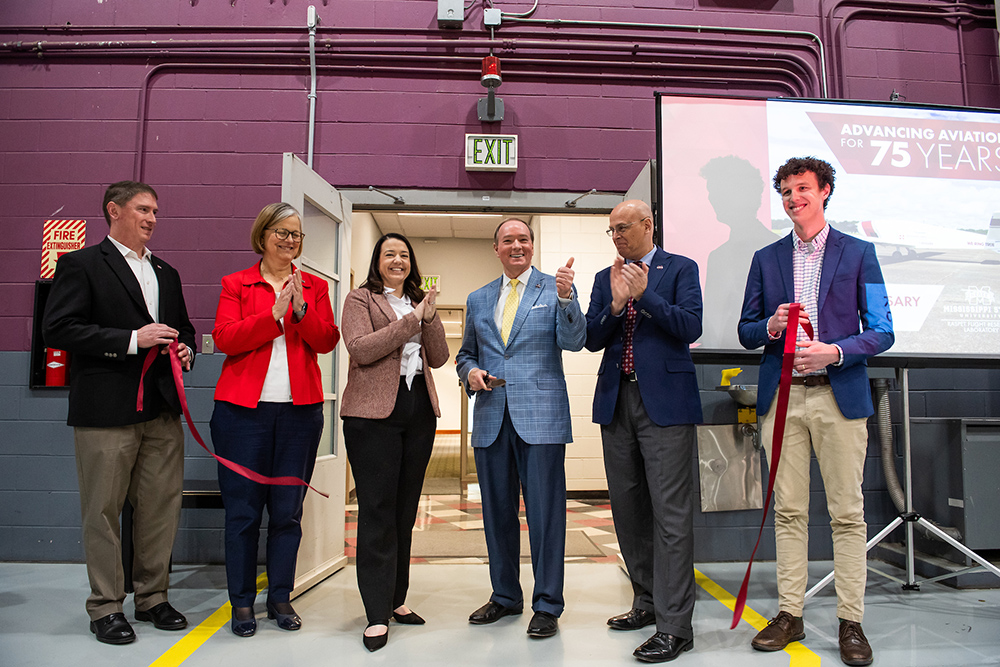Contact: James Carskadon

STARKVILLE, Miss.—Seventy five years ago, August “Gus” Raspet came to Mississippi State University to carry out a vision for aerospace research that pushed the boundaries of what is possible in flight.
On Tuesday [March 19], more than 100 people gathered to celebrate the continued success of that vision as MSU marked Raspet Flight Research Lab’s 75th anniversary.
“This university is a major research hub for developing the technologies of tomorrow,” said MSU President Mark E. Keenum. “The work right here at the Raspet Flight Research Lab is going to impact not only our state, but our nation and our world. And it all goes back to the vision Dr. Gus Raspet had for what Mississippi State could contribute to what was then the new field of aviation. We have built on that legacy for many years, and we are going to continue building on it.”
In video remarks, Mississippi Governor Tate Reeves thanked Raspet personnel for helping make Mississippi a leader in the aerospace industry.
“Raspet has a storied history of groundbreaking research, and its achievements have contributed to Mississippi being a top five state for aerospace and defense,” Reeves said. “This industry has been at the forefront of economic prosperity for our state. Since 2020, it has brought over $750 million in new capital investment and over 4,300 high-tech jobs to Mississippi.”
Major achievements in Raspet’s history include the 1965 development of the world’s first all-composite aircraft equipped with a turboprop, fabrication and assembly of the Honda MH-02, which was the world’s first all-composite business jet and, more recently, major designations and partnerships with entities such as the U.S. Federal Aviation Administration and the Department of Homeland Security. Today, Raspet boasts the largest uncrewed aircraft system fleet in U.S. academia and plays a major role in MSU-led efforts to safely integrate UAS into the national airspace, helping accelerate the benefits of UAS in key areas such as emergency response, health care, science and commerce.
Julie Jordan, MSU vice president for Research and Economic Development, noted how MSU’s multidisciplinary research teams work together to develop cutting-edge solutions to challenges faced by government and industry partners. She also noted that while Raspet is solving problems in the current landscape, the lab is providing student research opportunities and leading K-12 outreach activities that will inspire the next generation.
“In the last year, there have been more than 1,800 visitors to this facility, including roughly 700 sixth and seventh graders from Partnership Middle School, located on the MSU campus,” Jordan said. “We hope to inspire their future and make them aware of the possibilities right here in their backyard, whether they become pilots, engineers, flight technicians or whatever it may be.”
Tuesday’s celebration included a ribbon-cutting for Raspet’s newly renovated office space, which was expanded to support the lab’s growing number of personnel. The renovation was funded by the Appalachian Regional Commission.
MSU leaders recognized family members of Gus Raspet during the celebration, including his son, the late Richard Raspet, who passed away in November. Richard’s wife, Wendy Jean Garrison, accepted a commemorative cowbell on the family’s behalf.
For more on MSU’s Raspet Flight Research Lab, visit www.raspet.msstate.edu.
Mississippi State University is taking care of what matters. Learn more at www.msstate.edu.